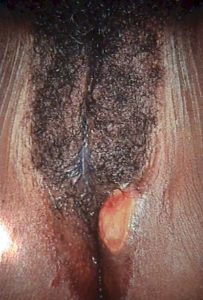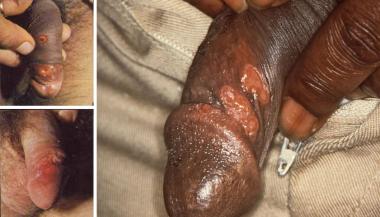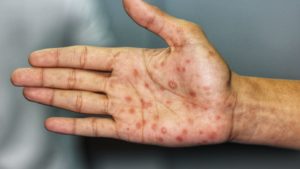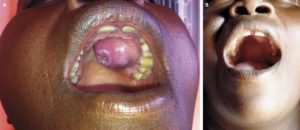The word “syphilis” was coined by Giraloma Fracastoro in 1530 in his book Syphilis sive morbus gallicus.
Syphilis is a bacterial infection cause by Treponema pallidum. Treatment with antibiotics early in the onset of the disease is usually effective, but if left untreated, it can lead to serious health trouble. It is sexually transmitted or through sharing of infected sex toys. It can also be transmitted from mother to child during pregnancy through placenta. Infected neonates or newborn babies are born without symptoms until about five weeks of birth.
The highest rate of syphilis is seen in Africa as reported by WHO.
Syphilis comes in different stages- the early and late stage of the disease.
The early stage is divided into:
- primary syphilis: this stage occurs 10-90 days after contact with infected person. The often begins as papular rash (small raised bumps) on the penis in males and vulva or cervix in females. The rash later develop in to PAINLESS ulcers which get healed with or without treatment within 4-8 weeks. There would also be enlarged lymph nodes around the groin, armpit or neck depending on where the rash appears. Rash do not only appear in the penis, vulva nor cervix alone. It could also be found on the tongue, nipple, anus etc in about 10 percent of the people. That means 10 in every 100 case.

Google image

Google image
- secondary syphilis: This stage often starts 2-10 weeks after the primary stage of syphilis. At this stage, the rash becomes widespread over the body- chest, abdomen and limbs including the palm and sole of the feet. Some strange forms of rashes known as condylomata lata (fluid-filled lesion that often look like genital warts) appears in the moist areas of the body like armpit, perineum and mouth. Other symptoms may include: hair loss, headache and fever. Secondary syphilis resolves in 3–12 weeks, at which point the disease enters the latent stage, defined as early-latent within two years of infection and late-latent thereafter.

Google image
- and early-latent syphilis: This is the first year after the secondary syphilis. About 25% of the infected patient have recurrence of symptoms again.
The late stage can be subdivided into
- late-latent syphilis: During this stage, patient cannot transmit the infection except for pregnant women who can transmit it to their unborn child through placenta. Patients can be in this phase for as long as 25 years.
- tertiary syphilis: Tertiary syphilis can occur 10-30 years after the onset of the infection, usually after a period of latency during which there are no symptoms. At this stage, syphilis damages the following organs and systems:
- heart
- blood vessels
- liver
- bones
- joints
Gummas may also develop. These are soft tissue swellings that can occur anywhere on the body.

Google image
Organ damage means that tertiary syphilis can often lead to death. Treating syphilis before it reaches this stage is, therefore, critical.
TEST YOUR DOCTOR MAY REQUEST FOR:
Polymerase Chain Reaction
Dark field microscopy
Non-specific test like VDRL
Direct Florescent Testing
Brain imaging like CT Scan and/or Brain MRI in case of neurosyphilis
Lumbar puncture in case of neurosyphilis
TREATMENT
Pattern of treatment is determined by the following factors:
- The stage of the syphilis.
- Allergy to penicillin
- Pregnancy and your trimester
- Extent of the complications
ADVICE
1. If you notice any of the symptoms above, contact a healthcare professional. Do not practice self-medication or delay medical intervention.
2. Do not resume sexual activities until after two that you have completed your treatment.
3. Do not have sex until all the lesions are healed.
4. Your sexual partner must also be tested and treated if need be.
SOURCES
UK national guidelines on the management of syphilis 2015.
World Health Organization (WHO). WHO guidelines for the treatment of Treponema pallidum (syphilis).
European guideline on the management of syphilis.
The Pharmaceutical Journal: Royal Pharmaceutical Society Publication.
Medical News Today

Dr. Adeyemo Olusola is a medical graduate of Olabisi Onabanjo University, Ogun State, Nigeria along with certificate in advanced diploma in Principles of Nutrition, Management and Leadership, Dublin and Certificate in Global Health from London School of Hygiene and Tropical Medicine. In addition to his numerous certifications, he is a certified Telemedicine Physician from Harvard Medical School, USA. He is an avid reader of books from different oases of life, expert in data analysis. “So many a time, I have seen people die avoidable death because of lack of knowledge or information, falling victim of fate. There is then a necessity laid on us to help arm our society to the teeth, as a healthy society cannot be detached from an informed one. Hence, there is need for healthgist.net. We hope you will have a wonderful stay on our website.”

